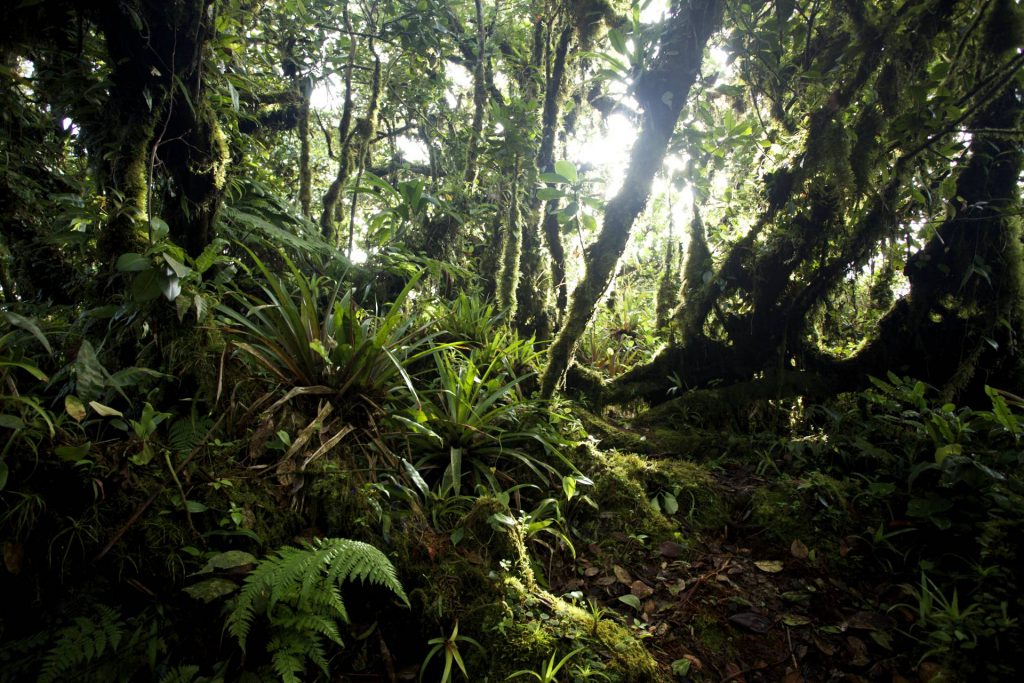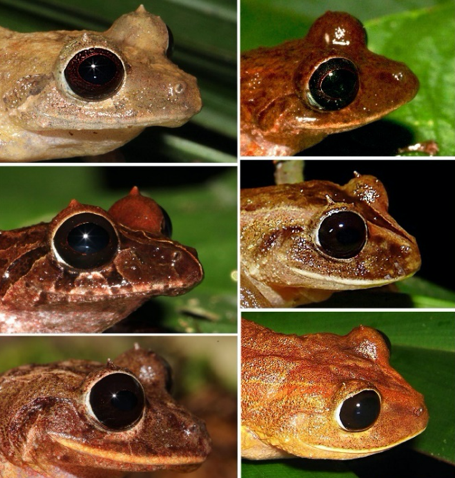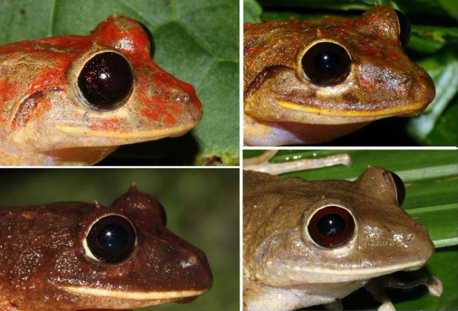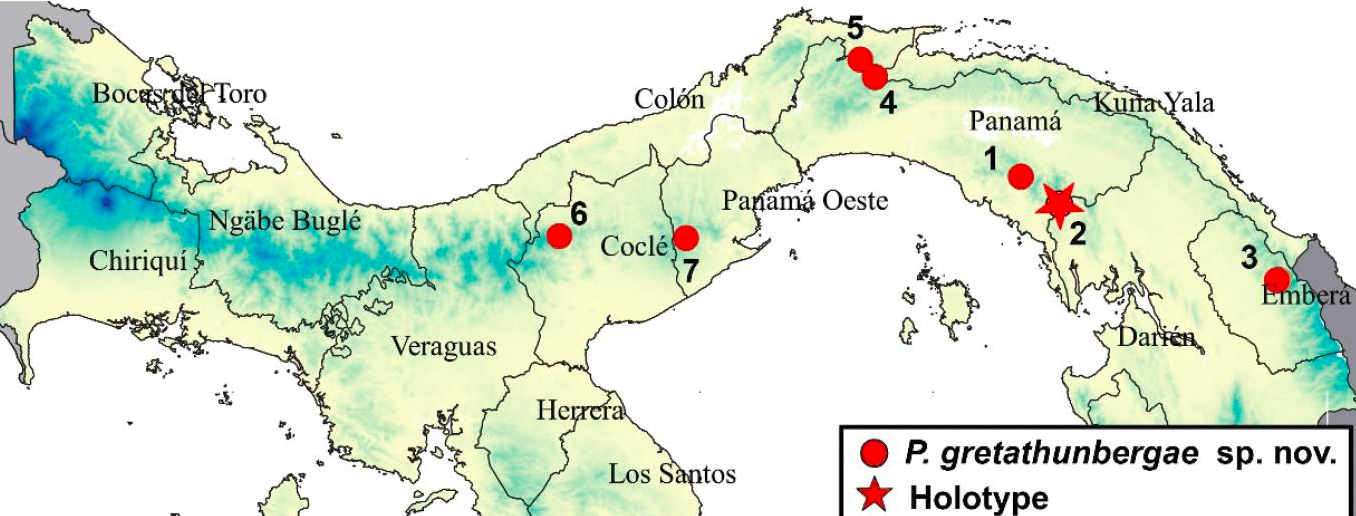Other Species
Bolitoglossa chucantiensis Chucantí Tink Frog
Diasporus majeensis Chucantí Centipede Snake
Tantilla berguidoi Anthurium annularum Anthurium chucantiense Heliconia berguidoi Photinus interdius Quindina kuna Notopleura sallydavidsoniae Diffenbachia mortoniana Neaporia chucanti Syscia austrella Greta Thunberg’s Rainfrog
Pristimantis gretathunbergae Anthurium berguidoi
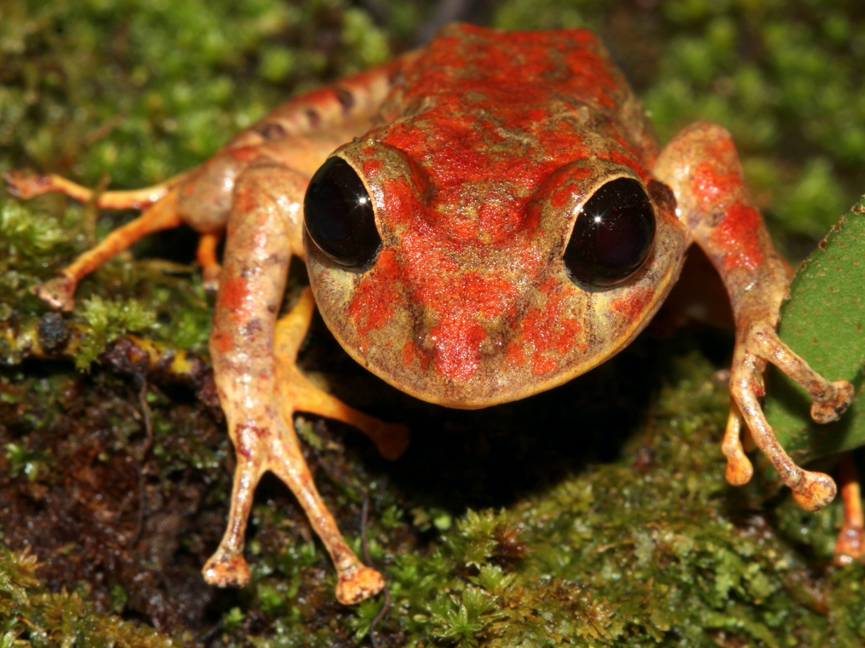
Greta Thunberg’s Rainfrog
Pristimantis gretathunbergae

Greta Thunberg’s Rainfrog
Pristimantis gretathunbergae
This new species is one of the more than 500 species in one of the largest genera of vertebrates in the world – Pristimantis– which represents almost 7% of all amphibians!
Although the genus has a wide distribution, P. gretathunbergae is so far only known from scattered patches of habitat throughout Panama. Also, many of these areas are surrounded by threats like chytrid fungus (Batrachochytriumdendrobatidis) and habitat loss for agriculture and logging. These factors have led the authors of the describing paper to suggest that P. gretathunbergae should be considered Vulnerable [VU] by the International Union for the Conservation of Nature (IUCN).
Identification
This small frog (about 3.5 cm long) is easily recognized as the only Pristimantis species in Panama with dark eyes. The additional combination of the single, spine-like structure on its eyelid, sharply dark-bordered light upper lip, and size generally avoid any confusion within the country.
Its coloration is usually yellowish above with large, irregular red blotches. However, this coloration can vary, being brown above with or without the red blotches (see the photos below for some variations).
Biology and Natural History
Habitat: Primarily found in montane forests from 718 - 1439 m in elevation. These forests mainly consist of moss-covered trees and a variety of the understory and midstory bromeliads in which this species mostly lives.
P. gretathunbergae has been found 0.5 - 3 m above the ground on tree bark or in bromeliads during the night; during the day they seem to only be found in bromeliad foliage.
Reproductive behavior: Males were observed calling (a sporadic "chack") at the end of the rainy season in December and other reproductive activities have been observed beginning with the rainy season in various areas.
Females guard eggs in bromeliad foliage or moss-covered tree branches for at least four days.
Diet: Specific diet not yet known. It's expected that P. gretathunbergae, like other related species, probably eats a variety of arthropods like ants and spiders.
Etymology
The scientific name of this species honors Greta Thunberg for her global climate activism. P. gretathunbergae, like other high-elevation species, faces a particularly high risk from climate change, as rising temperatures would destroy their small montane habitat, and the attention Ms. Thunberg is paying to this issue is vital to the conservation of this new species.
References
- Mebert, K., M. González-Pinzón, M. Miranda, E. Griffith, M. Vesely, P.L. Schmid & A. Batista (2022). A new rainfrog of the genus Pristimantis (Anura, Brachycephaloidea) from central and eastern Panama. Zookeys. 1081: 1–34. (Link)

